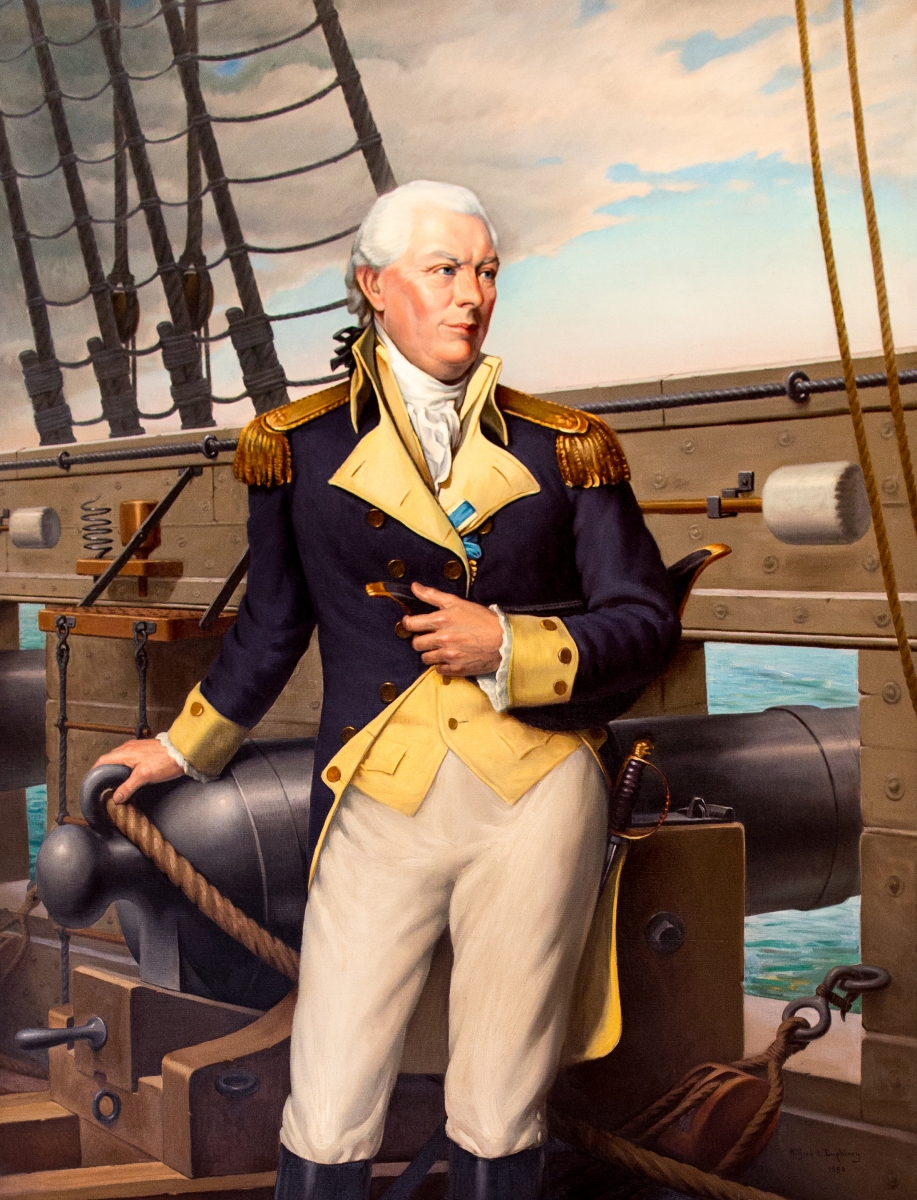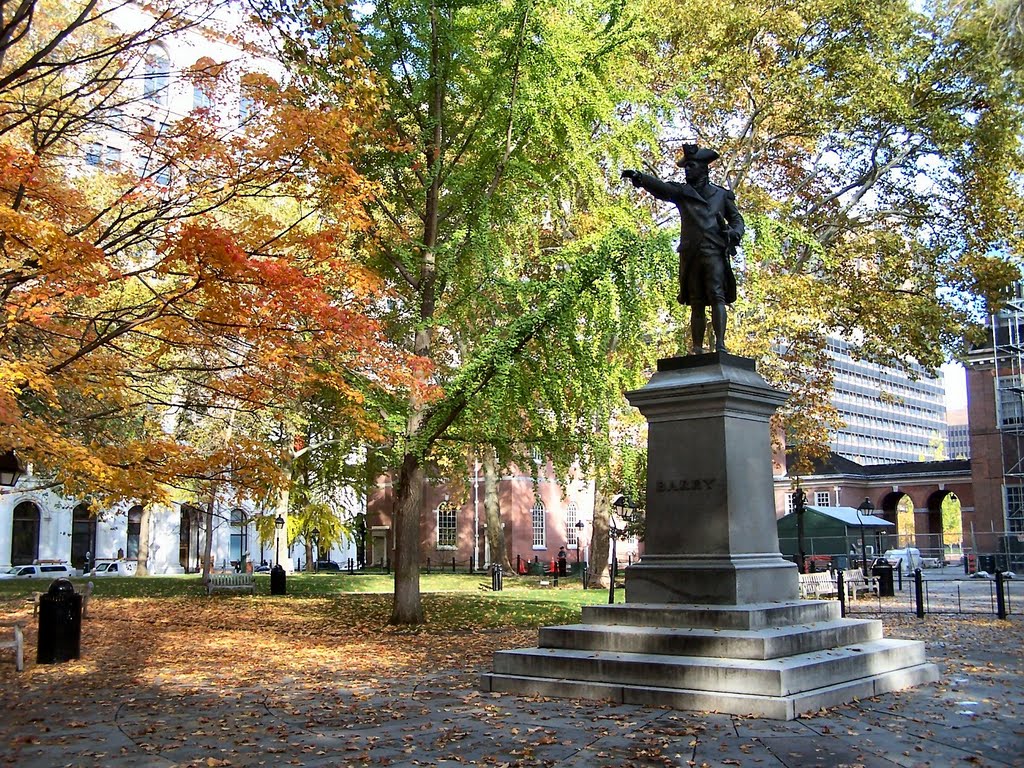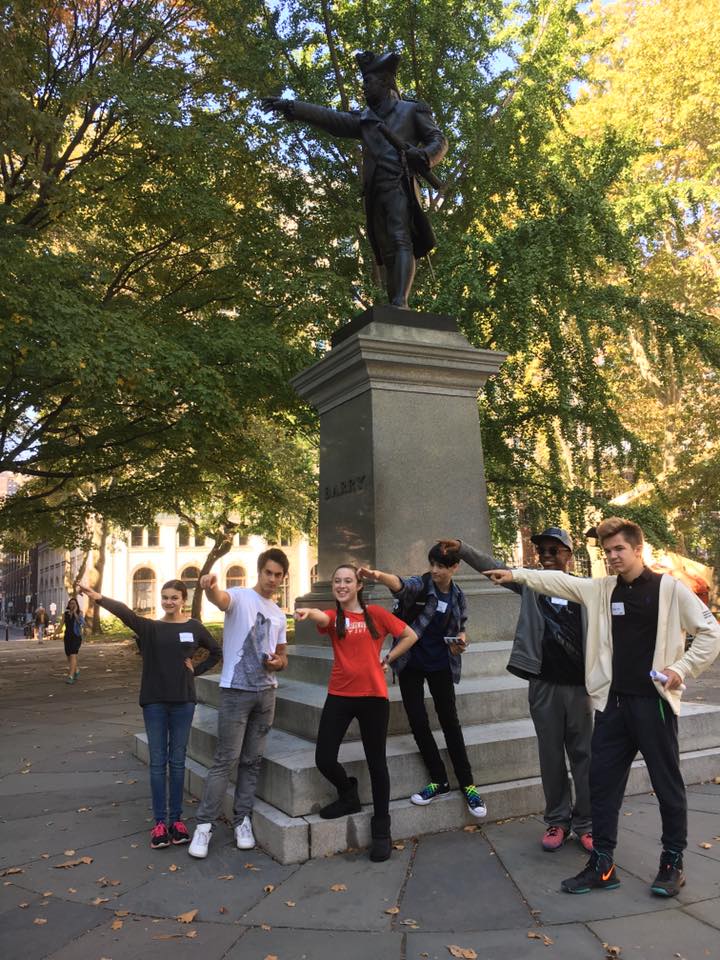Related Posts
- Buy Tickets for The Constitutional Walking Tour of Philadelphia – See 20+ Sites on a Primary Overview of Independence Park, including the Liberty Bell and Independence Hall
- Independence Hall
- Congress Hall
- The President's House
- New Hall Military Museum
- Museum of the American Revolution
- Tomb of the Unknown Soldier of the Revolutionary War
Birth: March 25, 1745
Death: September 13, 1803 (age 58)
Colony: Pennsylvania
Occupation: Sailor & Military Officer
Significance: Served as Naval Captain in Continental Navy (1775-1783); served as the Commodore of the United States Navy (1794-1803); and known as the Father of the American Navy

Childhood in Ireland
Commodore John Barry was a Founding Father of the United States of America. Barry was born in Wexford, Ireland in 1745 to a working class family. At a young age, Barry and his family moved to the Irish coast, and Barry learned about seafaring from his uncle who was a fisherman. While Barry received little formal education, he became a cabin boy on a merchant ship when he was still just a child. As a cabin boy, Barry was expected to wait on the officers and passengers on the ship and perform general errands and chores. Barry was an enthusiastic learner, and he had a naturally gifted mind and was able to quickly pick up on the skills required of a master seaman.
Pre-Revolutionary War Career
At the age of 15, Barry set out for the new world and settled in Philadelphia in 1760. By the time Barry was 21, he was considered a master seaman and earned command of his own ship. Barry worked as a ship captain in the Philadelphia merchant industry for years, completing countless round trip voyages across the Atlantic Ocean to Europe, to the West Indies, and beyond. As Barry grew more successful in America, he remained committed to his family back in Ireland, and to that end, he regularly sent them money.
During this time, Barry also married Mary Cleary in 1968 at Old St. Joseph’s Catholic Church in Philadelphia, and he subsequently purchased a house along Philadelphia’s waterfront along the Delaware River. The Barry's marriage would unfortunately not last long as Mary died in 1774 at the young age of just 29. By the age of 30, Barry was a well-known, and respected sea captain, who even owned his own ship.
Revolutionary War
Barry was already predisposed against the British worldview due to his childhood. During Barry’s childhood, Ireland was largely controlled by the British who persecuted native Irish, especially Catholics such as Barry and his family. When tensions between the American Colonies and Great Britain began to grow out of control, Barry was a strong supporter of the American cause. When the Revolutionary War broke out in 1775, Barry volunteered his services to his adopted homeland and even sold his ship to the newly formed Continental Navy. Barry himself was named a Captain in the Continental Navy on December 7, 1775, and he was given control of the Lexington, making Barry the first person placed in command of a U.S. warship.
Barry immediately enjoyed success in very difficult circumstances. Just days after Barry took control of the Lexington, Barry fought and took control of a British ship, the first such naval capture in the Revolutionary War.

Not only was Barry able to maneuver around the British and securely remove the majority of the gunpowder off the ship, but Barry was also able to rig the roughly approximate 100 barrels that remained on board the Nancy with a delayed action fuse. The next morning as the British boarded the Nancy, Barry triggered the fuse, destroying the ship and killing many of the British sailors who had boarded it, turning an impossible situation into a decisive American victory.
These early naval victories, while small in scale, were immensely important to a Continental Army that was desperately in need of munitions and supplies.
In 1780, Barry was given control of a frigate dubbed the Alliance, named so in commemoration of America’s important alliance with the French which had been secured two years prior. While in command of the Alliance, Barry became involved in one of the fiercest naval firefights in the Revolutionary War when he engaged with the British warships Atlanta and Trepassy off the coast of Canada. Barry was severely wounded in the fighting and lost a lot of blood which caused him to lose consciousness. When a barely conscious Barry was told the crew intended to surrender, Barry refused and retook command of the ship despite his injuries. The reemergence of their wounded captain apparently roused Barry's men to victory since both British ships were subsequently defeated. While still commanding the Alliance, Barry also participated in the last naval fight of the Revolutionary War in March of 1783.
After the Revolutionary War
Following the conclusion of the Revolutionary War, Barry returned to his life as a merchant ship captain for a brief time before his country once again called upon him for his service. In 1794, Congress signed into law the Naval Act which was the beginning of the present-day United States Navy, and Barry became the Navy’s first commissioned officer and was given the title of Commodore. Barry oversaw the construction of the Navy’s first warships and also helped to shape the standards of the United States Navy as he was involved in many activities including authoring the Navy’s official signal book, setting training standards, and helping to create the Department of the Navy.
As Commodore, Barry commanded the United States Naval fleet and his flagship the USS United States. When the United States became involved in a military conflict with France during John Adam’s presidency, Barry controlled United States Naval operations.
Death and Legacy as “Father of American Navy”
Barry died on September 13, 1803, and he was survived by his second wife Sarah Austin who he had married after the passing of his first wife Mary. Although he had no children, Barry remained very close with his family in Ireland and became a surrogate father to some of his nephews who were sent to American by family members in Ireland in an attempt to give them a better life with their successful uncle in America.
After his death, many dubbed Barry as the “Father of the American Navy,” a title Barry ended up sharing with fellow Revolutionary War captain John Paul Jones. Barry and Jones each possessed vastly different personalities as Barry was very quiet and cerebral, and thus stood in stark contrast with the brash and audacious Jones.
Despite their divergent personalities and intense professional competition, the two men shared an unlikely friendship based upon a great mutual respect for each other as navel captains. Jones respected Barry so much so, that upon his death, Jones left Barry one of his most treasured possessions, a gold sword that was given to Jones when he was knighted by King Louis XVI. Barry also demonstrated his mutual respect for Jones by wearing the bequeathed sword as part of his naval uniform for the rest of his life.

John Barry in Philadelphia
Barry spent much of his life at sea, but when he came ashore, Barry made Philadelphia his home. Barry not only lived in Philadelphia, but because Philadelphia served as the Capital of United States throughout much of this country’s early history between 1776 and 1800, it was also the city where most of his great professional accomplishments were recognized. It was in Independence Hall when Barry was named Captain of the country’s first naval ship by the Continental Congress. Today, a large statue of Commodore Barry stands outside of Independence Hall in its courtyard. After the Revolutionary War, it was in Congress Hall that the U.S. Congress named Barry the first commissioned officer in the United States Navy and gave him the title of Commodore. Afterwards, President George Washington hosted a large party in recognition of Barry’s appointment. Washington held the party at the President’s House (the predecessor to The White House), which was Washington’s residence in Philadelphia.
Today in Philadelphia you can also visit the New Hall Military Museum and the Museum of the American Revolution, both of which house artifacts from the American Revolutionary War and pay tribute to the soldiers such as Barry who fought for American Independence. Another tribute in Philadelphia to those who fought in the American Revolution is the Tomb of the Unknown Soldier, located in Washington Square Park, which is just steps off of the tour. Independence Hall, Congress Hall, the President's House, the New Hall Military Museum and the Museum of the American Revolution are all stops on The Constitutional Walking Tour!

Many of the important personal moments of Barry’s life also took place in Philadelphia. John married his first wife Mary at St. Joseph’s Catholic Church, the oldest Catholic Church in Philadelphia, which was founded by the Jesuits in 1733. Unfortunately for John, while his professional life was a great success, his private life was plagued by tragedy. His first wife Mary died at the age of just 29 and was subsequently buried at Old St. Mary’s Church and Cemetery. Just a few years later, Barry also lost his younger brother Patrick who also served in the United States Navy and with whom John was very close to.
The details of Barry’s tragic personal life are featured on the Spirits of ’76 Ghost Tour. The Spirits of ’76 Ghost Tour is one part history, two parts haunt! The Spirits of '76 allows visitors to see and learn about important American history, while also diving into the haunted folklore of the City of Philadelphia. The Spirits of ’76 Ghost Tour visits both Old St. Joseph’s and Old St. Mary’s, where Barry and his wives are now buried. The Spirits of '76 Ghost Tour also visits the impressive statue of Barry that stands in the square behind Independence Hall and discusses the evidence that the spirit of Commodore John Barry stills haunts Philadelphia to this day.
There is also the Commodore Barry Bridge which is a cantilever bridge across the Delaware River that connects Chester, Pennsylvania (a Colonial era city about 10 miles south of Philadelphia), and Bridgeport, New Jersey.



